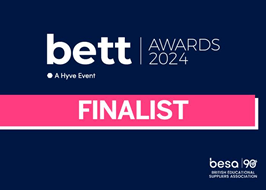Rosenshine's principles
This scheme is based around Rosenshine's principles of instruction:
Daily review
Students should be given opportunities to write programs at least once per week and ideally more frequently. Use the progress tracking sheet to enable students to mark off programs as they finish them to enable the teacher to monitor progress in every lesson.
Ask questions
The investigate questions presented in a simplified Shulte's block model provide a framework for questioning that can be used during class discussions or dialogue with the student as part of oral feedback.
Guide student practice
A "live coding" approach is taken where new concepts are introduced through sample programs and videos. There is no need for teachers to lead programming from the front of the class. It's not that effective. Lead class discussions about sections of code for programs in levels that all students have already passed. Use the increased time gained from not being tethered to the front of the class to work with individual students instead.
Independent practice
Students can make progress through the scheme at their own pace. That means a student may be working on a different program to others in the class. The learning programs all contain extensions so that students are not starting from a blank sheet. Practice problems provide a structured and differentiated approach to writing programs. They also include syntax guides, flowcharts and Parsons problems to help students solve problems independently.
Obtain a high success rate
Differentiated practice programs allow all students to be successful. The assessment points provide students with an opportunity to reflect on what they have learned so far and only progress when they can solve 80% of the success criteria in the assessment.
New material in small steps
Careful attention has been paid to the levels of progression. New programming principles are introduced in an order that has proven to increase student understanding and avoid confusion. Learning programs only introduce a small number of new commands.
Provide models
Learning programs provide examples of new commands being used. Videos show programs being developed. Syntax guides provide help with syntax and flowcharts provide help with sequencing.
Scaffolds for difficult tasks
In addition to videos, students have a knowledge organiser with syntax guides, flowcharts and Parsons problems they can use for scaffolding. One-star programs provide boilerplate comments, function definitions, main code function calls and output statements so that students can focus on the logic inside subprograms. Two-star programs also provide boilerplate comments, function definitions and main program output statements. Three-star programs only contain boilerplate comments.
Check student understanding
When a student has finished a program, they should invite their teacher to review it with them. Assessment points also provide for an opportunity to check student understanding.
Weekly and montly review
It is important that teachers establish routines so that they have opportunities to review student's programs but also that students are keeping pace to ensure the scheme is finished before examinations start. Use the progress tracker to monitor progress.
